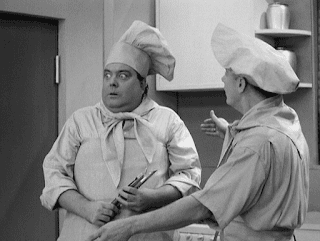I've written about a few airlines here on YesterYear, such as Spirit Airlines, Kiwi Air, Business Express, AccessAir, and, most recently, National Airlines of Las Vegas.
This is a continuing series here on YesterYear where I try to honor some of the forgotten or lesser-known airlines that have flown off into the sunset. I'm also working towards covering the airlines featured in an article from Arthur Frommer's Budget Travel magazine that helped inspire me to choose this crazy industry for a career. The article called "Update on the Upstarts" covered "nine, feisty, in-your-face airlines." Eventually, once they are all (or mostly) covered, I plan to provide an "update" on the "Update on the Upstarts."
Today, we'll look back at the brief life of a 1990s "upstart" airline based in Kansas City, Missouri, Vanguard Airlines.
At the turn of the century, I was close to graduating high school, getting ready for college, and choosing a career. My career path was chosen from early childhood, honestly. I always wanted to fly like Superman, but airplanes became the next best thing when I realized that was impossible. As I got closer to entering the workforce, I closely followed the development of several of the "upstart" airlines that began popping up nationwide during that time. These airlines fought uphill battles from the get-go, and hardly any are still in business today. In their original form, anyway.
Why was I especially interested in following Vanguard Airlines? Well, after reading about them in the Budget Travel article, my Mother took a flight on them to a speaking engagement at a convention! I was very excited for her, and I'm sure afterward, asked her a million questions in great detail about the flight. Sorry, Mom, for overlooking your big event in favor of a plane ride.
Originally planned to be a Midwestern-focused low-cost/low-fare airline, Vanguard planned to undercut the costs of the major airlines and charge lower fares to gain a customer base. Fares as low as $29 each way ($52 in 2023 money) were the standard, and sale fares were often marked down to as low as $10.
Unfortunately, when Vanguard began operations and entered several markets, the major carriers had learned how to deal with such low-cost competition. They simply lowered their own fares on competing routes, being able to offset any losses from their much larger route structure where they could charge higher fares. This tactic made it nearly impossible for an up-start airline like Vanguard to succeed.
Vanguard began operations in 1994, based in Kansas City, Missouri.
By early 1995, Vanguard operated scheduled service between Kansas City and Dallas/Fort Worth, Texas, Milwaukee, Wisconsin, and Salt Lake City, Utah (via a stop in Denver, Colorado.) These flights initially operated with Boeing 737-200 jets configured in an all-coach passenger cabin.
By the summer of 1995, Vanguard added flights from Kansas City to Des Moines, Iowa, Minneapolis/St. Paul, Minnesota, and Wichita, Nebraska. It also began operating several point-to-point flights (flights not to/from a hub) between Minneapolis and Chicago's Midway Airport and Dallas/Fort Worth to Denver. Vanguard ceased service to Milwaukee by the fall of 1995.
A year later, during the summer of 1996, Vanguard added routes between Kansas City, Los Angeles, and San Francisco. That same summer, the airline began operating a small hub from Wichita, launching service to Chicago's Midway, Dallas/Fort Worth, and Denver, in addition to its regular service to Kansas City.
By mid-1997, Vanguard celebrated its launch of daily nonstop flights between Kansas City and New York City (JFK Airport) while at the same time ending service to Des Moines, Las Vegas, Los Angeles, Wichita, and all four destinations in Florida.
The airline made more moves later that year, searching for any market that would generate revenue. It added flights between Kansas City and Washington D.C.'s Dulles International as well as Chicago's Midway to Pittsburgh.
In the spring of 1998, Myrtle Beach was served from Atlanta with connections to Kansas City. Months later, the airline dropped service to both New York City and San Francisco.
The following summer, Vanguard opened a small hub at Chicago's Midway, providing service to Buffalo, New York, Cincinnati, Ohio, Minneapolis, Pittsburgh, and Kansas City.
In 2000, after the turn of the century, the airline began a new promotion to change itself from a "discount" airline to a more financially sustainable "low-cost" carrier. This type of airline has lower costs than the legacy carriers but can compete on more than just price. Extra legroom, frequent flier programs, better customer service, and on-time operational performance were used to entice new customers.
The "new and improved" Vanguard worked for a time, and the airline saw significant improvements in financial performance. That year, with renewed customer enthusiasm and a better operation, they began serving New York City again, this time via La Guardia. They also added service to New Orleans, Louisiana, and introduced nonstop service between Chicago and Denver. Cincinnati and the seasonal service to Myrtle Beach and Buffalo were dropped from the route system.
The summer of 2001 saw the best growth and financial performance the airline had ever achieved, but the September 11, 2001 terror attacks changed the airline's trajectory. By October, the airline had cut 20% of its staff. Full-time employees were cut to 32 hours per week. The executive suite took a 25% pay cut as the airline struggled to compete in a market that saw nearly empty planes flying schedules reduced by more than a third.
On September 11, 2001, the entire day quickly became chaos for any airline operation. Airplanes, crew, and passengers were stranded all over the country, many in airports that the airline didn't even fly to. The skies over America were empty for two or three days, save for a few small "emergency" flights authorized by the government. Some airline historians consider Vanguard the first airline to begin regular commercial flights once the skies were reopened, but several other airlines also claim to be the first. The truth is a little muddy 20 years later for such a trivial fact.
According to Vanguard internal documents, the first occurred on the evening of September 13 from Kansas City to Chicago's Midway. Many other carriers did not start service until the 14th or 15th as they worked to get crew and passengers back on schedule.
In the immediate aftermath, poor ticket sales caused the airline to scale back all routes from its Chicago operation except for Kansas City.
Despite this, in an attempt to drive revenue, by the end of 2001, Vanguard had added Austin, Texas, Colorado Springs, Colorado, and Fort Lauderdale, Florida, to its schedule. They had also resumed service to Las Vegas, Los Angeles, and San Francisco.
The airline also introduced a new logo and paint scheme during this time, attempting to catch the eye of the flying customer. Very similar to the old Braniff International "Flying Colors" concept, this paint scheme was adopted to coincide with the introduction of the McDonnell Douglas MD-80 series of aircraft that joined the airline. Each new aircraft was painted with a different color in the new scheme.
 |
| The new colors concept on an MD80 aircraft. Each plane featured a different color, such as purple, depicted above, or other colors like red, green, or blue. |
The airline may have had a new look, but another self-inflicted wound would ultimately cost the airline everything. A plan in the works before 9-11 saw the airline change its reservation system from Open Skies brand software to SABRE. SABRE is an airline software that is notoriously complex and not very user-friendly, and this move cost the airline millions of dollars.
SABRE not only ran the ticketing reservations but also provided for flight crew and aircraft tracking, as well as several other back-end functions. Being unable to make a smooth transition hindered the airline's day-to-day operation in lost ticket sales, mixed-up reservations, flight delays, and cancellations. This cost them customer confidence and, ultimately, financially.
On at least three reported meetings of executives, the CEO Scott Dickson and Marketing Director Greg Aretakis concluded that the transformation to SABRE absolutely must succeed, or at that would be the airline's demise. Daily revenue records showed a marked increase in overall sales, but difficulties in adopting SABRE overshadowed the successful sales increases.
The money that the Federal government provided Vanguard after the 9/11 terrorist attacks offered a new lease on life. It allowed for a few months of reorganization and planning. The internet ticket "hot deals" kept the airline above water for several months, and the hopes of future additional funding from the government's "Air Transportation Stabilization Board" kept a positive outlook among Vanguard's employees.
At the end of 2021, the airline reported a net loss of $29 million, blamed on 9-11 and the transition to SABRE.
In December 2001, the carrier applied for $55 million of backing on a $60 million loan, then changed it to $13.5 million on a $15 million loan. That was rejected on May 28, and Vanguard then asked for $35 million of backing on a $40 million loan. It reduced the $40 million figure to $8 million by July 2002, which was also rejected.
The loans were ultimately refused because "the airline did not provide a reasonable assurance that Vanguard could repay the loan."
The summer of 2002 was terrible for nearly every airline but even worse for Vanguard. While waiting to hear about additional funding from the government (that would eventually be denied in July), the operational performance continued to improve to pre-9/11 summer of 2001 levels.
However, the airline was still anchored with $80 million in debt. As credit card processors grew increasingly nervous about increasing bookings at Vanguard while the operation faltered, they required significant assurances they would not lose their money if the airline failed.
CEO Scott Dickson wrote in his memoir that these processing companies required bonds of 125% of sales to continue processing customers' credit cards. Because of this, as each ticket was sold, the airline lost money. The financial situation was unsustainable, and the airline ceased operations on July 29, 2002.
At the time of closure, Vanguard operated 70 flights to and from 18 cities with 14 aircraft. When operations ended, National and Frontier Airlines quickly offered to take Vanguard passengers on their aircraft on a space-available basis.
Not long after declaring bankruptcy, Rober H. Brooks, owner of Hooters restaurants and PACE Aviation (which would later become Hooters Air), attempted to purchase the airline. The bankruptcy courts rejected his offer, and Vanguard Airlines was set to be liquidated. Its headquarters in Kansas City would become the temporary offices of the Transportation Security Administration of Kansas City. The building is now home to Entercom Radio.
The airline operated Boeing 737-200 and 300 variants throughout its existence, along with Boeing 727-200s leased from Falcon Air Express and TransMeridian Airlines. The airline flew four different McDonnell Douglas MD-80 variants in the final years.
The airline had been a publically traded company for six years but was not profitable once. Shares traded as high as $287 in 1996 and on the close of business the day before it filed bankruptcy, shares traded at only 25 cents.
At the time, several industry "experts" seemed to enjoy Vanguard's demise. Darryl Jenkins, then director of the Aviation Institute of George Washington University, claimed, "If they went out of business, nobody would miss them. It's ridiculous for them to blame their problems on the stabilization board. Their problems existed before 9/11." While that may be true, claiming nobody would miss them disregards the customers stranded without flights and the employees on the unemployment line in a downturned economy.
Michael Levine, a former airline executive who teaches government regulation at Yale, had a more direct approach when he said, "If they had a credible business plan, they would have gotten the financing." He also said it was reasonable for the banks to look at the government's rejection as a sure sign they weren't credit-worthy.
While it may have only flown for 8 years, the airline certainly left its mark on the industry. In many markets that it entered, major airlines like American or Delta would frequently take losses on flights by lowering their airfare to match Vanguard's.
Vanguard will also be remembered as one of the first, if not a leading pioneer, in bringing full-size jets to smaller regional cities. During the 1990 regional jet boom, a CRJ-200 regional jet was a notable improvement over flying on a turbo-propeller-driven Beech 1900. When Vanguard entered the market, their Boeing 737 was a much-welcome improvement in customer satisfaction. This may be commonplace today, but it was noticeable to travelers over 20 years ago.
Vanguard offered e-ticketing and online reservations well ahead of most other low-cost airlines. The airline's ridiculously low fares provided the customer better service than today's low-cost carriers, like Frontier or Spirit. While extra legroom was still the norm back then, and baggage fees were still unheard of, Vanguard's tickets were as cheap as riding on Greyhound. This was a welcome sight to college students, families on vacation, and small business owners.
Despite its faults, Vanguard Airlines will be most often remembered as simple, efficient, and friendly.










.png)





Comments